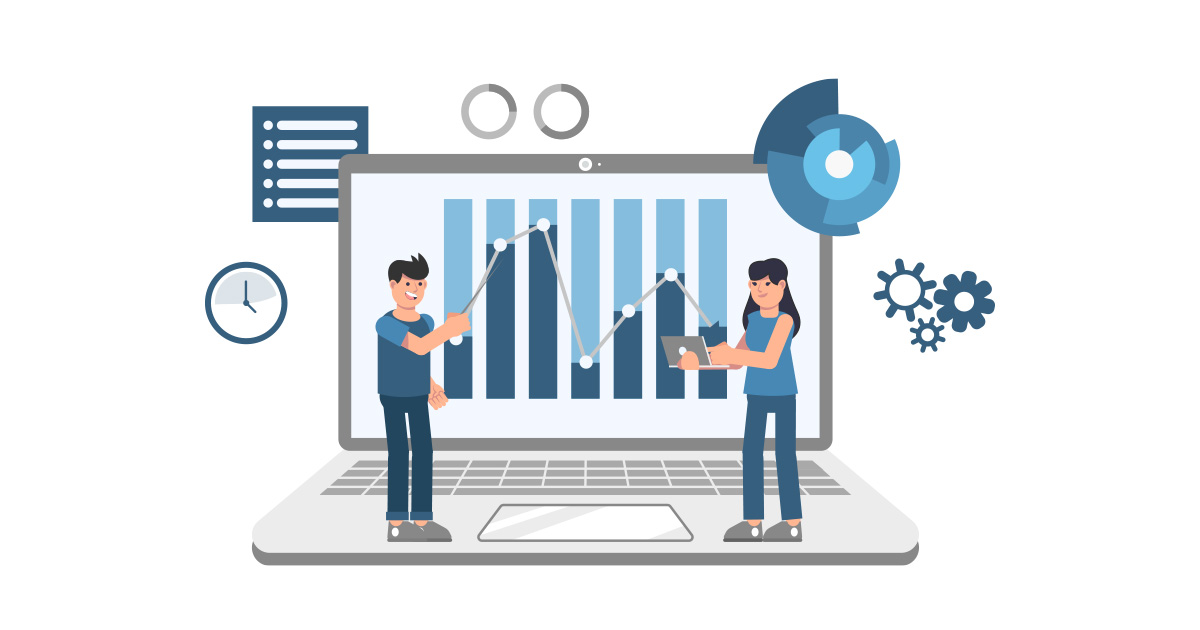Today in 2025, website performance plays a important role in user engagement, conversions and search engine rankings. A slow or poorly optimized website can frustrate visitors, leading to high bounce rates and lost opportunities. Bounce rate refers to the percentage of visitors who leave your site after viewing just one page. A high bounce rate can indicate poor user experience, irrelevant content or slow loading speeds. As a general guideline, a bounce rate of 40% or lower is considered good while a bounce rate of 55% is considered high and may indicate that improvements are needed to engage visitors and encourage them to explore more of your website. In this thorough article, our WebsCare research team has explained about how to improve website performance and reduce bounce rates.
Looking for expert web development services? Get in touch with us today!
What is Website performance?
Website performance refers to how quickly and efficiently a website loads and responds to user interactions. It includes factors such as page load speed, responsiveness, uptime, and overall user experience. A well-performing website ensures that visitors can access content smoothly without delays, leading to better engagement and lower bounce rates. Key elements that affect website performance include server speed, image optimization, caching, and code efficiency. High website performance is essential for improving search engine rankings, user satisfaction and conversion rates.
What is Bounce rates?
Bounce rate is the percentage of visitors who leave a website after viewing only one page without taking any further action, such as clicking a link, filling out a form, or navigating to another page. A high bounce rate often indicates that users are not finding what they need or that the website has poor user experience, slow loading times, or irrelevant content. Reducing bounce rates involves improving website speed, enhancing content quality, optimizing navigation, and ensuring a mobile-friendly design to keep visitors engaged and encourage further interaction.
Effective Strategies to Optimize Website Performance and Lower Bounce Rates
If you want to improve your website performance and keep users engaged, follow these effective strategies

Optimize Page Load Speed

One of the main reasons users leave a website is slow loading times. According to research, 53% of users abandon a site if it takes more than three seconds to load. Here’s how to optimize your website speed
Make Your Website Mobile-Friendly

With over 60% of web traffic coming from mobile devices, mobile optimization is essential. A non-responsive website can lead to a poor user experience and increased bounce rates.
| Best Practice | Description | Benefit |
|---|---|---|
| Test with Google’s Mobile-Friendly Test | Analyze site compatibility with mobile devices | Ensures a seamless user experience |
| Use Responsive Design | Adapt layout to different screen sizes | Improves accessibility & usability |
| Avoid Pop-ups & Intrusive Interstitials | Minimize disruptions that frustrate mobile users | Enhances user experience & retention |
| Implement AMP (Accelerated Mobile Pages) | Optimize pages for faster mobile loading | Reduces bounce rates & boosts SEO |
Enhance User Experience (UX) and Navigation

Users should be able to navigate your website with ease. If your website is confusing or cluttered, visitors may leave immediately.
| UX/UI Practice | Description | Example | Benefit |
|---|---|---|---|
| Use Breadcrumb Navigation | Help users track their path and easily navigate back | “Home > Blog > Best Gadgets 2024” | Enhances user experience & navigation |
| Clear & Compelling CTAs | Ensure CTAs are visually appealing and encourage action | Button: “Shop Now” or “Learn More” | Boosts conversion rates |
| Improve Readability | Use legible fonts, proper spacing, and a clean layout | Font: Arial, Spacing: 1.5, Simple layout | Enhances user engagement & clarity |
| Keep Menu Simple & Intuitive | Design a straightforward, easy-to-navigate menu | Menu: Home, About, Services, Blog, Contact | Improves navigation & accessibility |
Improve Content Quality and Relevance

Content is a major factor in keeping visitors engaged. If users don’t find valuable information quickly, they are likely to leave.
| Strategy | Description | Benefit |
|---|---|---|
| Use Short Paragraphs & Bullet Points | Break content into digestible sections using headings and bullets | Enhances readability & user experience |
| Create High-Quality Content | Develop engaging, relevant, and audience-focused content | Increases engagement & retention |
Reduce Distractions and Unnecessary Elements

Too many ads, pop-ups and auto-playing videos can drive visitors away. Keep your site clean and distraction-free.
Implement Internal Linking and SEO Best Practices

Internal linking helps users explore more content on your website, reducing bounce rates. Additionally, SEO optimization ensures users land on relevant pages.
| SEO Practice | Description | Example | Benefit |
|---|---|---|---|
| Internal Linking | Link to related blog posts and pages within your site | Linking an article on “Best Headphones” to a blog on “Top Audio Accessories” | Improves navigation & SEO ranking |
| Optimize Meta Titles & Descriptions | Craft compelling and keyword-rich meta titles & descriptions | Title: “Best Wireless Earbuds 2024” Description: “Discover top-rated earbuds with superior sound and battery life.” | Enhances click-through rate (CTR) |
Curious about how web development is shaping Pakistan’s digital future? Let’s read more about it.
Use Exit-Intent Popups and Live Chat

Instead of letting users leave, you can capture their attention with strategic engagement techniques. Exit-intent technology detects when a user is about to leave the site (e.g., moving the cursor toward the close button) and triggers a popup with an enticing offer.
Analyze and Optimize with Data Insights

To continuously improve website performance and reduce bounce rates, it’s essential to track and analyze user behavior. Data-driven decisions help you understand what’s working, what’s not, and where improvements are needed. To continuously improve your website, monitor user behavior and make data-driven adjustments.
| Task | Description | Purpose |
|---|---|---|
| Use Google Analytics | Track bounce rates and page performance | Monitor user behavior |
| Identify high-exit pages | Analyze pages with high exit rates and optimize them | Improve engagement & retention |
| Conduct A/B testing | Compare different layouts, headlines, and CTA placements | Enhance conversions & UX |
Searching for the best web development tools? Let’s find the top 8 tools to optimize your workflow and enhance productivity!
Conclusion
Improving website performance and reducing bounce rates requires a combination of speed optimization, mobile responsiveness, quality content and user engagement strategies. In this thorough article, our WebsCare research team has explained about how to improve website performance and reduce bounce rates. By making these changes, you can enhance user experience, retain visitors and boost conversions. Plus, creating compelling content, improving navigation and implementing clear call-to-action buttons can encourage users to explore further instead of leaving immediately. Regular performance monitoring and A/B testing are also crucial for identifying areas of improvement. By adopting these best practices, businesses can enhance user satisfaction, boost conversions and achieve long-term success in the digital landscape.


